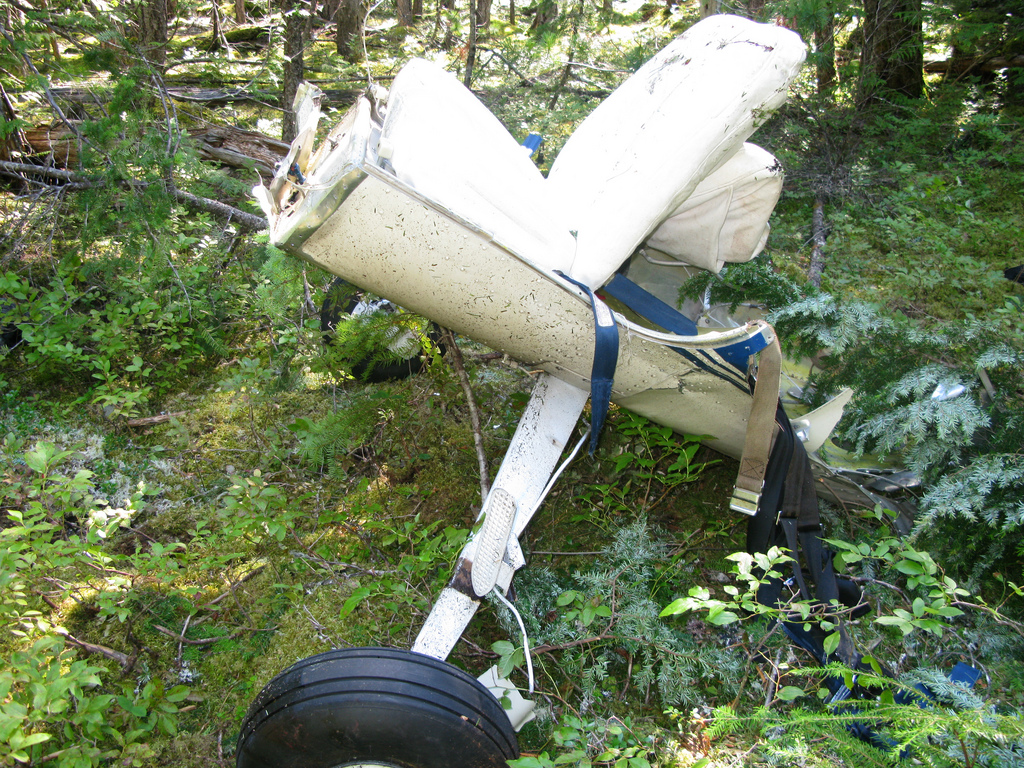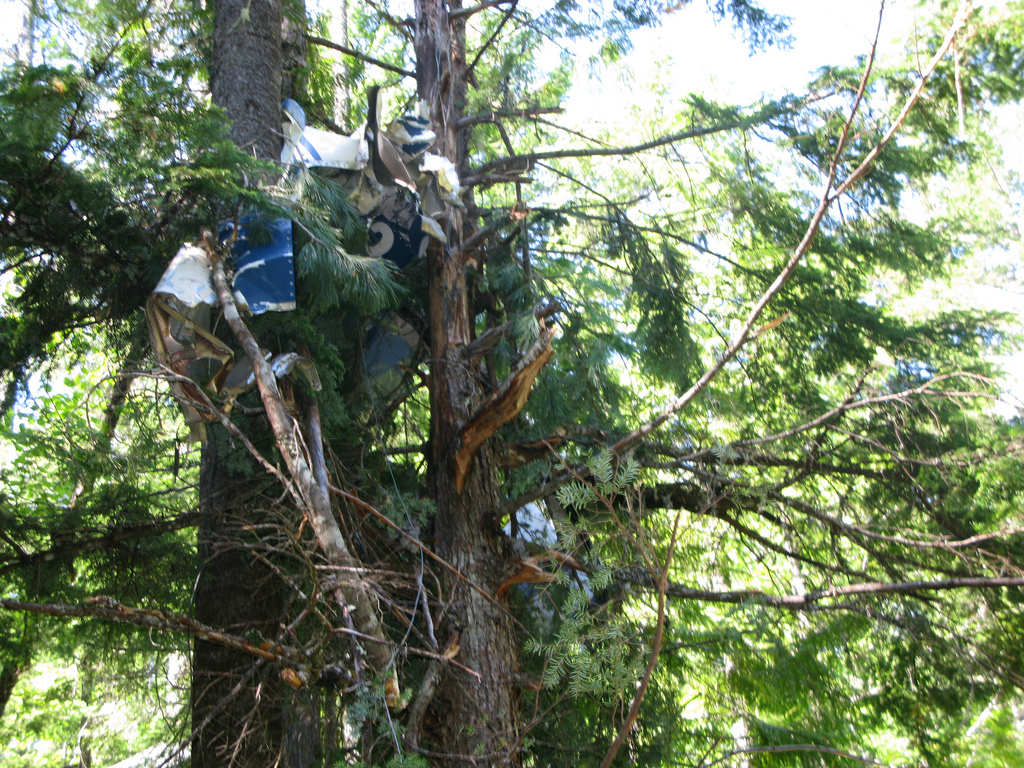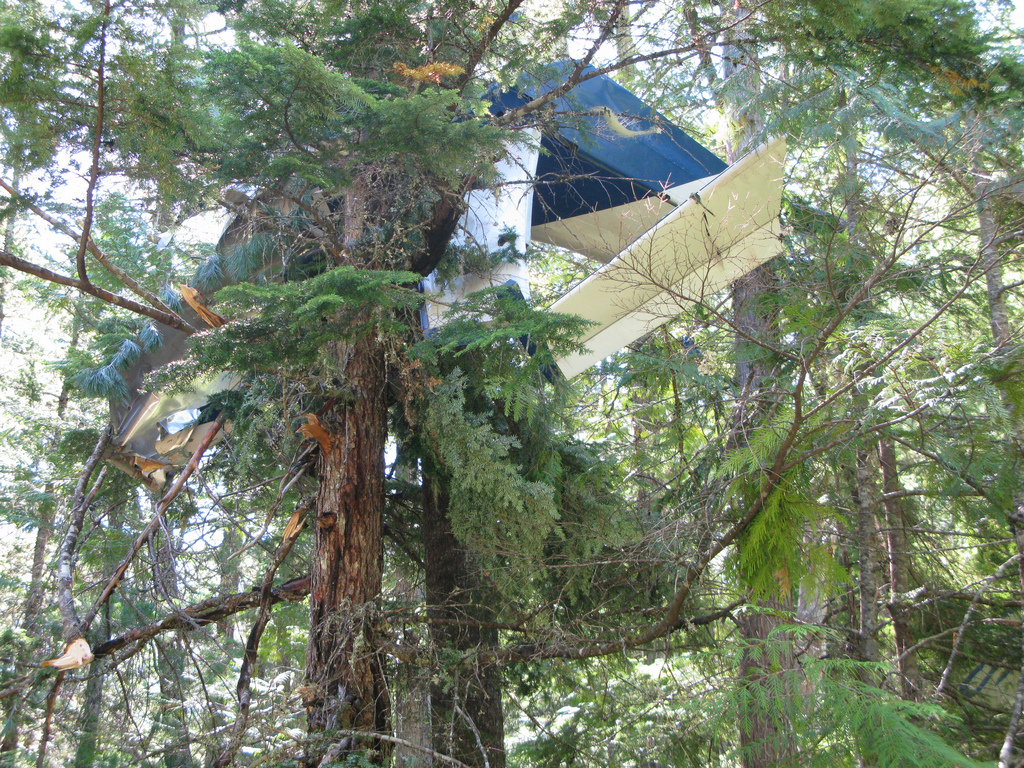Mid-air collision
Cessna 150F, C-FSQQ and
STEMME S10-VT, C-FHAB
Pemberton, British Columbia, 3 nm W
The occurrence
The privately registered Cessna 150F (registration C-FSQQ, serial number 15061702) departed Lillooet, British Columbia, for Nanaimo, British Columbia, with the pilot, 1 passenger, and a dog on board. A privately registered Stemme S10-VT motor glider (registration C-FHAB, serial number 11-016) was inbound to Pemberton, British Columbia, after a local sightseeing flight, with the pilot and 1 passenger on board. Both aircraft were being operated in accordance with visual flight rules. At approximately 1218 Pacific Daylight Time, the 2 aircraft collided about 3 nautical miles west of Pemberton and struck the ground in the Nairn Falls Provincial Park Campsite. There were 2 main accident sites about 0.3 nautical miles apart. Both aircraft were destroyed, and there were no survivors. There was an intense post-impact fire, which consumed the cockpit and engine compartment of the glider. The Cessna engine compartment suffered a small post-impact fire, which self-extinguished. No emergency locator transmitter signals were detected at the time of the accident.
Media materials
News release
June 2013 mid-air collision near Pemberton, British Columbia, highlights risk of relying solely on the see-and-avoid principle for collision avoidance
Read the news release
Deployment notice
Transportation Safety Board of Canada will deploy a team of investigators to a fatal air accident near Pemberton, British Columbia
Richmond, British Columbia, June 29, 2013 - The Transportation Safety Board of Canada (TSB) will deploy a team of investigators to a fatal accident near Pemberton, British Columbia, where a Cessna and a glider collided. The TSB will be launching an investigation.
Investigation information
Download high-resolution photos from the TSB Flickr page.
Class of investigation
This is a class 3 investigation. These investigations analyze a small number of safety issues, and may result in recommendations. Class 3 investigations are generally completed within 450 days. For more information, see the Policy on Occurrence Classification.
TSB investigation process
There are 3 phases to a TSB investigation
- Field phase: a team of investigators examines the occurrence site and wreckage, interviews witnesses and collects pertinent information.
- Examination and analysis phase: the TSB reviews pertinent records, tests components of the wreckage in the lab, determines the sequence of events and identifies safety deficiencies. When safety deficiencies are suspected or confirmed, the TSB advises the appropriate authority without waiting until publication of the final report.
- Report phase: a confidential draft report is approved by the Board and sent to persons and corporations who are directly concerned by the report. They then have the opportunity to dispute or correct information they believe to be incorrect. The Board considers all representations before approving the final report, which is subsequently released to the public.
For more information, see our Investigation process page.
The TSB is an independent agency that investigates air, marine, pipeline, and rail transportation occurrences. Its sole aim is the advancement of transportation safety. It is not the function of the Board to assign fault or determine civil or criminal liability.


